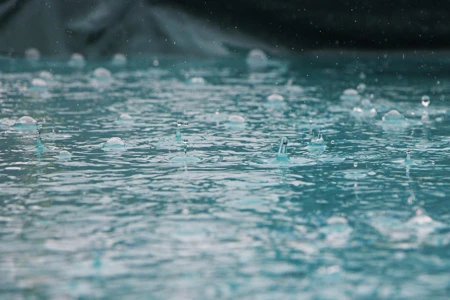Water has a habit of getting into a property through the tiniest of cracks and this can cost you a fortune very quickly if not found and fixed.
There are five key ways rain can cost you thousands of pounds if you don’t make repairs quickly – and professionally.
1. Roof
It’s very easy for rain to start getting into your roof structure and cause damage, even with little drips, if you have missing or broken roof tiles or if things like the ‘flashing’ around chimneys have cracked or aren't sealed properly.
2. Guttering
An easy one to miss but which can quickly lead to damp in a property is a leaky gutter. The best way to spot one is to wait for a rainy day and check visually from the outside of the property whether any parts of the guttering have failed. You will know soon enough as water will drip or even pour. If it pours down the walls, this can cause damp to penetrate through the wall very quickly, meaning you have to redecorate.
3. Drainage
Guttering will feed the water away from your property but it’s essential to make sure that drains are free so the water they take will then drain away, not sit around and get into the foundations. Water always has to go somewhere and it’s vital it is taken away via a public sewer.
This might just need you to remove leaves from drains so water can get through or, if there are any reasons why it can’t – damaged guttering for example – then get it fixed.
If it’s a problem with the drain itself, you may have insurance via your water company or it’s worth getting in touch with them to see if it’s your or their responsibility to get it fixed.
To find out more about water surface drainage, there is a useful guide from Ofwat available online
4. Poor masonry
Over time, walls and mortar can decay and allow water to get in through them. The walls may develop cracks or any rendering may fail, allowing moisture to get in between the render and the wall.
These issues may seem very small to start with, but can quickly lead to damp on the walls which is miserable for your tenant – and considered a health and safety hazard - but can also quickly devalue your property, so even if you think the walls are OK, if you haven’t had them professionally checked for some years, it's worth doing so.
5. Vegetation
It's worth checking what vegetation is around your property as plants retain water and their roots can easily damage drains or walls and foundations. Ideally, make sure your walls are free of vegetation or if you have a beautiful climber, then do ad hoc checks to make sure it’s not causing any problems to the property’s structure.
These are very simple checks to take and you may think you would know very quickly whether there was a problem or not, but unfortunately, your tenants may not notice and alert you to an issue before it escalates. It is essential that periodic checks are carried out by you if you are managing yourself, or your agent so that problems can be highlighted and action taken. Don’t ignore any issues; get some quotes in from qualified tradespeople who offer warranties and guarantees which survive the company going bust or the tradesperson retiring.
Before you rent your property out, it's advisable to have a financial review in order to make sure you get the right buy to let mortgage for your needs.
Please don't hesitate to contact us to speak to one of our specialist buy-to-let advisers.
Important information
There is no guarantee that it will be possible to arrange continuous letting of the property, nor that rental income will be sufficient to meet the cost of the mortgage.
Your property may be repossessed if you do not keep up repayments on your mortgage.
There may be a fee for mortgage advice. The actual amount you pay will depend upon your circumstances. The fee is up to 1% but a typical fee is 0.3% of the amount borrowed.

